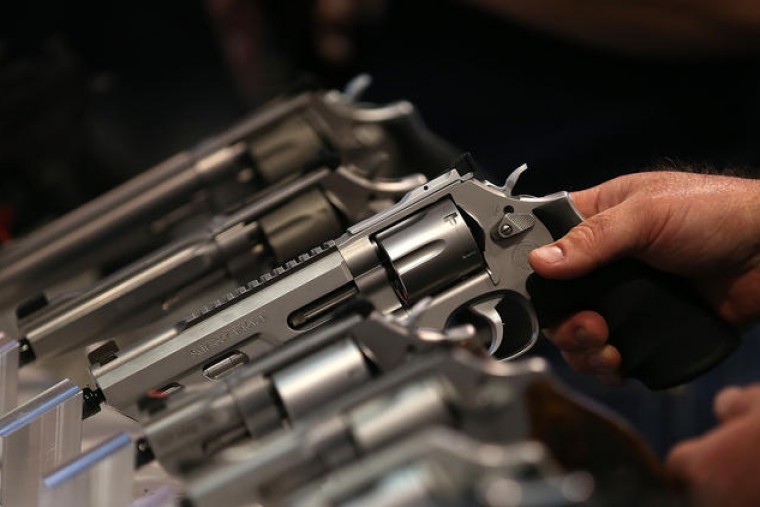
After the Sandy Hook tragedy, reporters often called me to ask for information on firearms. They wanted to know whether strong gun laws reduced homicide rates (I said they did); and, conversely, whether permissive gun laws lowered crime rates overall (I said they did not). I discovered that in their news articles journalists would write that I said one thing while some other firearms researcher said the opposite. This “he said-she said” reporting annoyed me — because I knew that the scientific evidence was on my side.
One of the reporters I complained to said that he had covered climate change for many years. He explained that journalists were able to stop their “balanced” reporting of that issue only when objective findings indicated that the overwhelming majority of scientists thought climate change was indeed happening, and that it was caused by humans.
So I decided to determine objectively, through polling, whether there was scientific consensus on firearms. What I found won’t please the National Rifle Assn.
My first step was to put together a list of relevant scientists. I decided that to qualify for the survey the researcher should have published on firearms in a peer-reviewed scientific journal, and that he or she should be an active scientist — someone who had published an article in the last four years. I was interested in social science and policy issues, so I wanted the articles to be directly relevant. I was not interested in scientists doing research in forensics, history, medical treatment, psychiatric issues, engineering or non-firearms (for example, nail guns, electron guns).
Most of the scientists who were publishing relevant articles were from the fields of criminology, economics, public policy, political science and public health. Since there are typically many more authors on public health articles than on criminology articles, to have a balanced list I decided to include only the first author on the byline. Graduate students working for me identified more than 300 distinct first authors, and found more than 280 email addresses.
Of course it’s possible to find researchers who side with the NRA in believing that guns make our society safer, rather than more dangerous. As I’ve shown, however, they’re in the minority.
Last May we began sending out short, monthly surveys. The first question on each survey asks how much the respondent agrees with a particular claim related to firearms, and the second and third questions ask the respondent to rate the quality of the scientific literature, as well as their own level of familiarity with the scientific literature on that particular topic.
So, for example, one survey asked whether having a gun in the home increased the risk of suicide. An overwhelming share of the 150 people who responded, 84%, said yes.
This result was not at all surprising because the scientific evidence is overwhelming. It includes a dozen individual-level studies that investigate why some people commit suicide and others do not, and an almost equal number of area-wide studies that try to explain differences in suicide rates across cities, states and regions. These area-wide studies find that differences in rates of suicide across the country are less explained by differences in mental health or suicide ideation than they are by differences in levels of household gun ownership.
A 2014 meta-analysis, conducted by researchers at UC San Francisco, of the scientific studies on guns and suicide concluded that access to firearms increases the risk of suicide. Similarly, the 2012 National Strategy for Suicide Prevention from the National Action Alliance for Suicide Prevention and the U.S. Surgeon General concluded that “firearm access is a risk factor for suicide in the United States.”
As I said, I wasn’t surprised by the results of that questionnaire. Still, it was nice to be able to document that the large majority of gun researchers have arrived at the same conclusion about firearms and suicide from their reading of the scientific literature.
I also found widespread confidence that a gun in the home increases the risk that a woman living in the home will be a victim of homicide (72% agree, 11% disagree) and that a gun in the home makes it a more dangerous place to be (64%) rather than a safer place (5%). There is consensus that guns are not used in self-defense far more often than they are used in crime (73% vs. 8%) and that the change to more permissive gun carrying laws has not reduced crime rates (62% vs. 9%). Finally, there is consensus that strong gun laws reduce homicide (71% vs. 12%).
Of course it’s possible to find researchers who side with the NRA in believing that guns make our society safer, rather than more dangerous. As I’ve shown, however, they’re in the minority.
Scientific consensus isn’t always right, but it’s our best guide to understanding the world. Can reporters please stop pretending that scientists, like politicians, are evenly divided on guns? We’re not.
by David Hemenway
http://www.latimes.com/opinion/op-ed/la-oe-hemenway-guns-20150423-story.html?wpmm=1&wpisrc=nl_wonk



